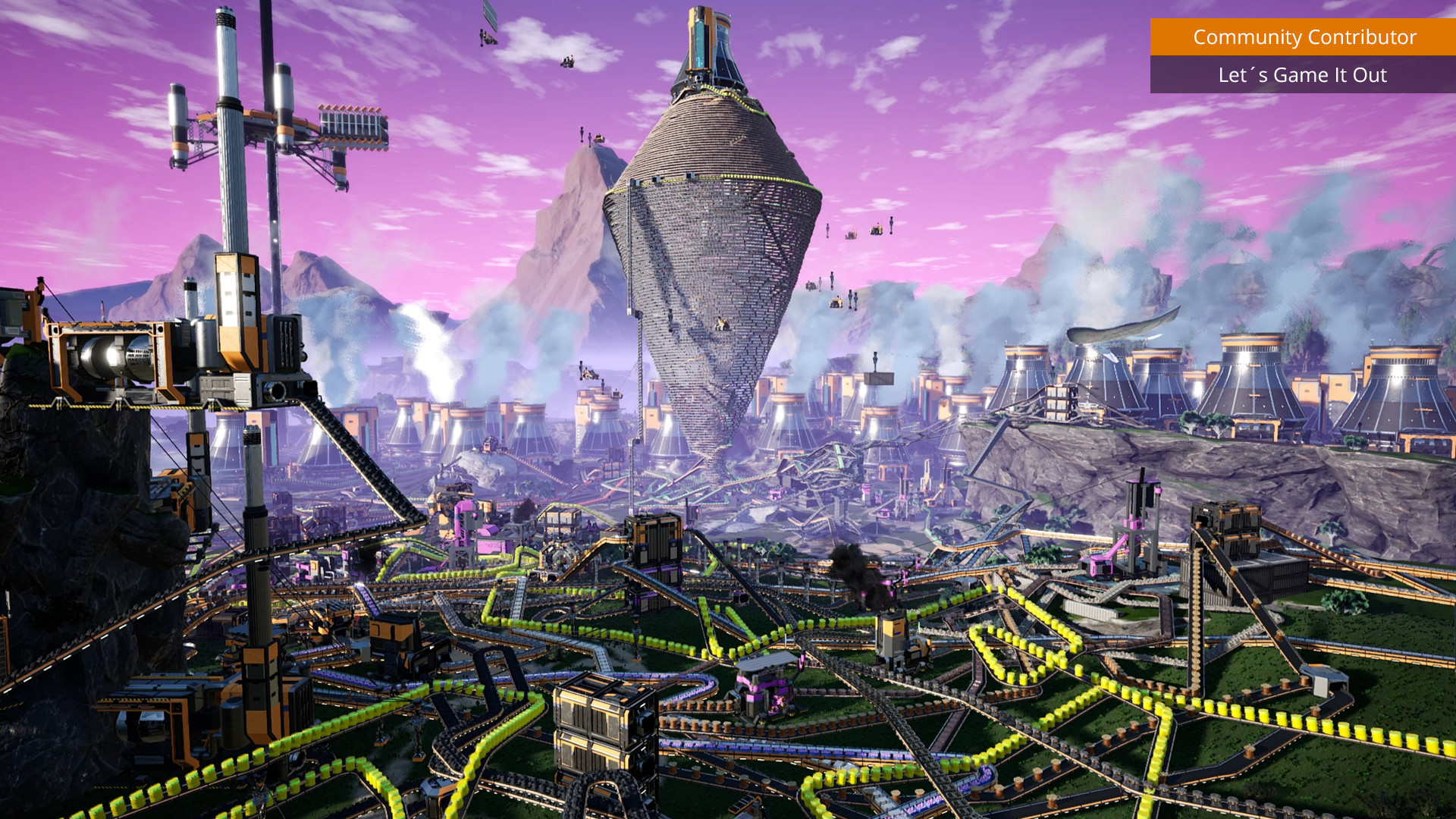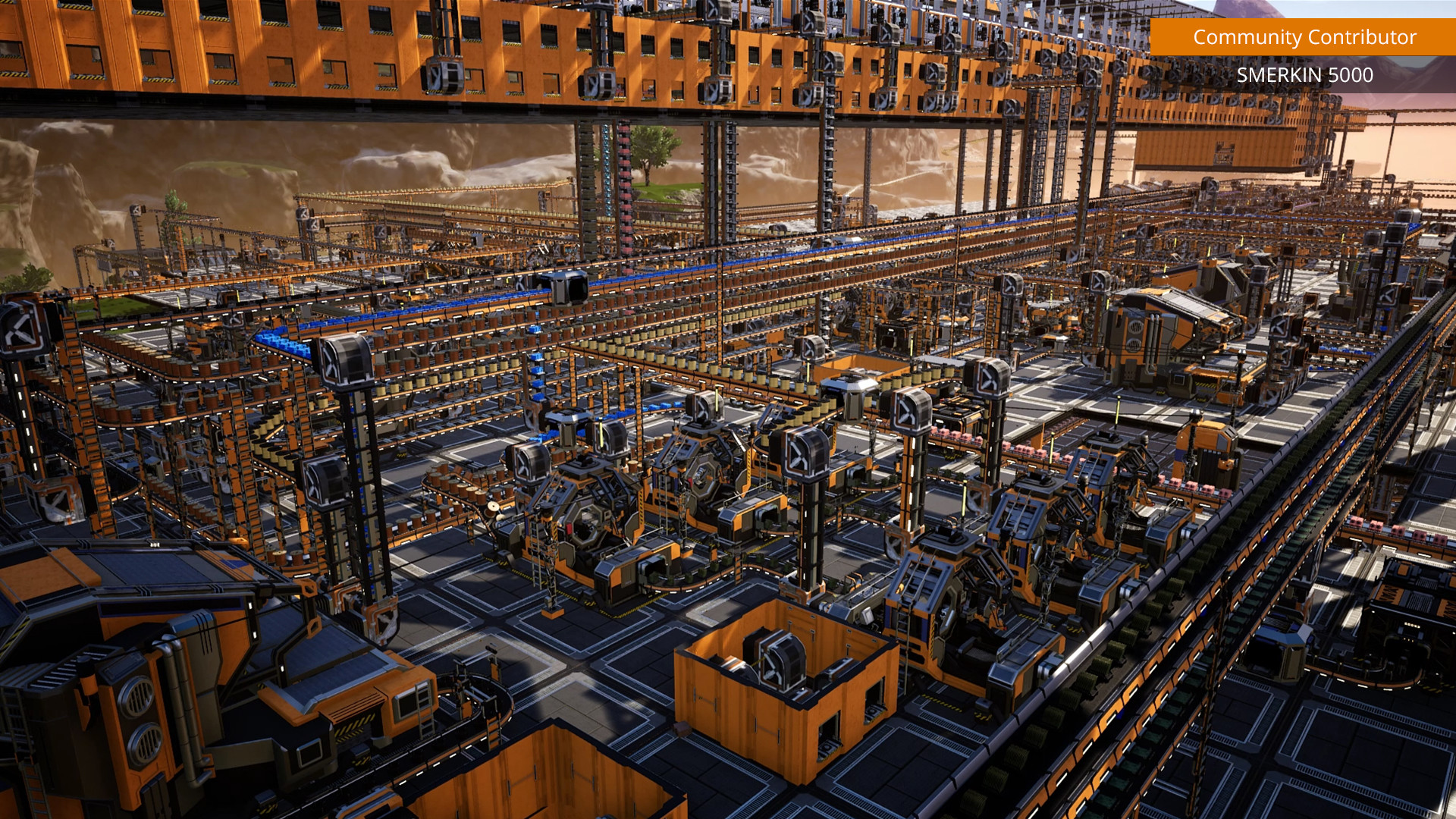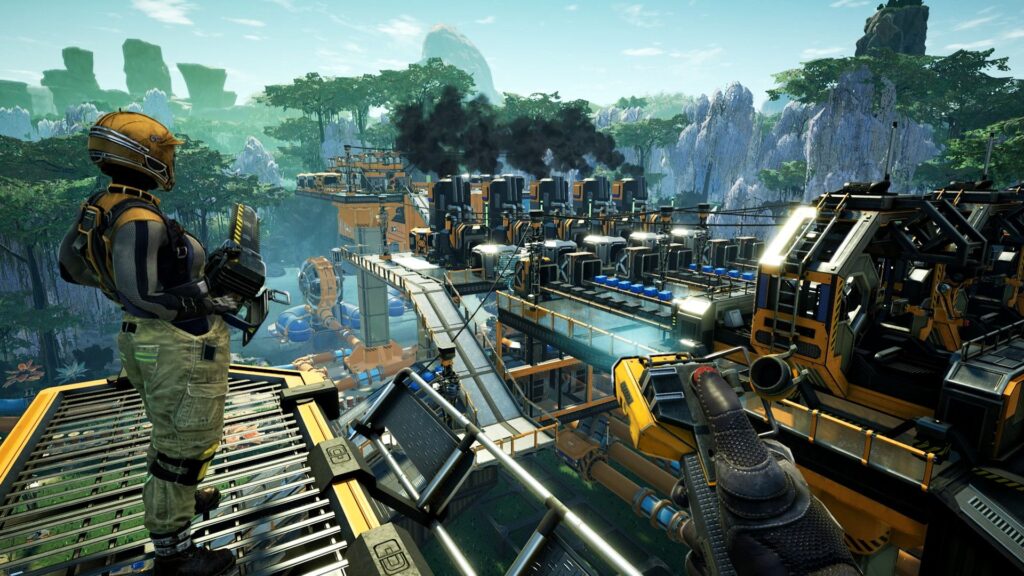There’s a ticking in my brain. It’s the sounds of conveyor belts moving. Smelters converting ore into ingots. The hydraulics. Fluids navigating pipes (assuming everything went right). When I started playing Satisfactory, there was relative calm, but before I knew it, the ticking was all around me and all of me. The factory must grow but I don’t know where the factory ends and I begin.
I wouldn’t have gotten it had I never played Factorio (the other factory-building, automation-focused addition that’s a perfectionist’s nightmare). You could say that Factorio and Satisfactory are two sides of the same coin – play one or the other, depending on your hardware or choice of perspective. Grow the factory to the exclusion of all other thoughts.
“It may sound like a meaningless grind, but the appeal isn’t mining resources to build stuff, just to build other stuff, until the heat death of the universe. It’s in optimizing the entire process. “
However, it’s more than that. Satisfactory isn’t a mission to build a space rocket to escape from a hostile world. It’s a constantly evolving exercise in problem-solving brought to you by the lovely corporate folks at FICSIT, with a monolithic Space Elevator showcasing the various phases to aspire to, gatekeeping the higher tiers of technology. The local fauna isn’t a fan of you, but they’re not out to actively uproot you. Everything works towards optimized resource gathering, manufacturing, and transporting to The Hub. It’s basic yet brutal. Simple yet instinctive. Ever-consuming yet fulfilling. And it’s beautiful.
Satisfactory is about you, an employee of FICSIT, touching down on an alien world to harvest its resources for the company’s gain. Your HudOS offers ADA, an AI assistant to somewhat guide you through the process, providing updates on new materials and unlocked tiers but mostly providing snarky comments. Sometimes, a strange corruption overtakes her, hinting at something greater. Maybe it’s a bug.
While the narrative isn’t super heavy-handed, there are some interesting bits here and there, like the state of Earth. Maybe it’s all lies told by ADA to motivate you towards FICSIT’s goals, whatever they may be. Regardless, none of this gets in the way of the core gameplay loop.
How do you go about harvesting all these resources? With machines, of course. Drills to extract ore. Smelters to refine them into ingots. Constructors for automatically crafting them into plates, rods, sheets, wires, etc. Refining said items to make Screws, Reinforced Iron Plates, and Cables. Combine items to make Rotors, Smart Plating, and Modular Frames. And so on. And so forth.
It may sound like a meaningless grind, but the appeal isn’t mining resources to build stuff, just to build other stuff, until the heat death of the universe. It’s in optimizing the entire process. You could spend the day standing at your crafting bench and hammering out all the materials (though some project items can’t be constructed through this method). However, it’s faster and more practical to figure out ways to automate and run it in the background.
“There are many occasions where order is thrown to the wind – it doesn’t matter where goes what, so long as you can build the next thing.”
Does a Constructor produce an excess amount of Screws? A Conveyor Splitter to send some to another machine and build something else. The Screws aren’t enough to keep up with the produced Ingots? Two Constructors feed into a Conveyor Merger, then a Conveyor Splitter, one on top of the other, connected through a Conveyor lift. While you could criticize the lack of terrain editing, it’s central to the problem-solving appeal.
Take the pipe problem from earlier. After reaching Tier 3 and unlocking the Coal Generator, I could mine the resource and build Water Extractors. Combine the two to produce steam, providing more electricity to power my machinations. The challenge is in transporting both materials. I started with the water and found a lake not too far from The Hub with an ample supply. The problem is that it’s overlooked by cliffs.
Thus began an exercise in frustration (the good kind, I swear this isn’t unhealthy) and curiosity, figuring out how to maneuver the pipes and construct pumps to transport it up the cliffside. Optimization is important here because the water flow starts dropping with longer pipe distances. Maybe I could build Fluid Buffers along the way, storing the water more efficiently before sending it further without a water flow loss. I don’t know if that would, and that’s the best part.
There are many occasions where order is thrown to the wind – it doesn’t matter where goes what, so long as you can build the next thing. Each new tier and goal, from unlocking faster conveyor belts and the chainsaw to building 50 Smart Plating for the Space Elevator’s first phase, is a push to go even further.
When the factory turned into a massive regretti spaghetti, I promised to change. I saw the appeal of Foundations, especially given the different kinds of environmental elevations. Everything would be organized (or organized better). I would be better. Then, I chased after the next milestone because the thought of a Tractor that I could automate was appealing.

“I also appreciated how organic the actual factory aspect is. You’re not feeding fuel into a Biomass Burner, but also manually flipping the switch to turn it on.”
After 20 hours in two days, all of this barely scratches the surface of what Satisfactory has to offer. There’s an entire exploration aspect, where you venture across the planet and battle hostile creatures or discover Power Slugs and new materials. Alien materials can be placed into the MAM for research and unlocking further resources like Bio-Organic Materials and even new weapons and inventory slots. Constructing more tools and faster transportation methods facilitates further exploration.
Maybe you’ll discover other ore nodes and think about how to mine and transport them back to The Hub. Another new problem with some exciting solutions, which you won’t be satisfied with until it’s fully optimized. The presence of multiple environments, each with unique challenges, also helps with the replay value.
Obviously, this can get a little overwhelming, especially when keeping track of all the different materials. Coffee Stain Studios does well at streamlining, whether it’s the minimalist interface or the Codex and the ability to search for whatever you need. Buildings and structures can be easily hotkeyed, scanning for resources is straightforward, and the map offers multiple ways to mark important points and regions.
I also appreciated how organic the actual factory aspect is. You’re not feeding fuel into a Biomass Burner, but also manually flipping the switch to turn it on. Milestone completion results in pressing a big red button for space launch before the unlocks pour in. The Space Elevator hums to life when completing a phase. All of this improves immersion, further aided by the gorgeous visuals.

“Even if its ambitious scale can occasionally cause issues, Satisfactory demands – and earns – every bit of your time, and then some.”
From dusk and dawn to skyboxes with galaxies and other planets, not to mention the sheer expanse of the flora or the realistic water, everything about Satisfactory is gorgeous, right down to the nuanced animations of machines. The soundtrack works quite well, remaining understated but adding to the atmosphere.
The only downside is the bugs and crashes, though both are fairly minimal. One bug prevented me from adding buildings to hotkeys while another caused some odd clipping issues with the water. I experienced two crashes, the first ironically from launching the game. Nevertheless, the overall level of polish considering the sheer size and scale of the endeavor.
For years, I’ve had Satisfactory on my radar because I enjoyed Coffee Stain’s Sanctum series. The sheer effort and attention to detail that’s gone into the experience is incredible. The gameplay loop remains addictive and endearing, with each new unlock encouraging you to approach, revamp, and expand your factory further. Even if its ambitious scale can occasionally cause issues, Satisfactory demands – and earns – every bit of your time, and then some.
This game was reviewed on PC.


